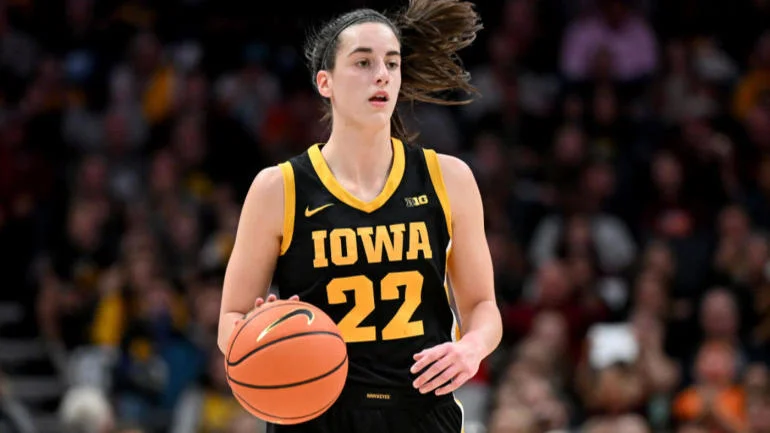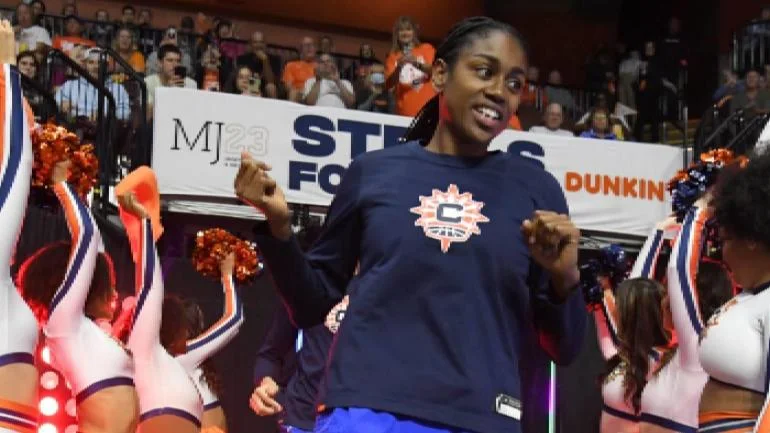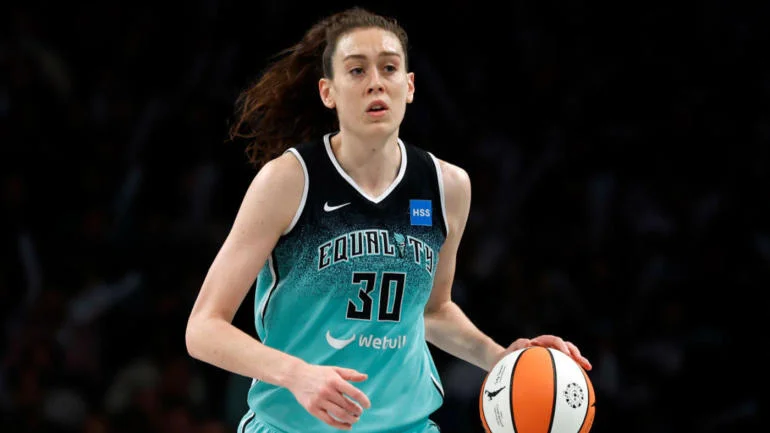
The Indiana Fever were the lucky winners of the 2024 WNBA Draft Lottery on Sunday, and they now have the No. 1 overall pick for the second year in a row. With it, Indiana is expected to select Iowa star Caitlin Clark, who, along with unanimous 2023 Rookie of the Year Aliyah Boston, should end the Fever’s status as a perennial lottery team.
But what about the other teams and the other top prospects in this talented 2024 draft class? Now that the lottery is set, let’s take a look at how things might shake out with an initial lottery-only mock draft.
(Note: Clark, Bueckers and Brink are all eligible to return to school next season.)
- Indiana Fever: Caitlin Clark – G, Iowa
Let’s be honest, you could have pre-written this months ago, as Clark has long been the projected first pick regardless of which team won the lottery. That it was the Fever, who have won the No. 1 pick for the second year in a row and can now pair her with unanimous Rookie of the Year Aliyah Boston in a perfect inside-outside combination, only makes it more certain.
Clark leads the nation in scoring at 29.5 points per game, is tied for fourth in assists at 7.4 and seems likely to become the first player since Breanna Stewart to win back-to-back Naismith Player of the Year awards. She is a true game-changing talent on the perimeter with elite shooting and playmaking ability. The best guard prospect to turn pro in years, Clark would immediately form the most exciting young duo in the league with Boston.
- Los Angeles Sparks: Paige Bueckers – G, UConn
After the Fever, the Sparks were the day’s big winners. They only missed out on the playoffs by one game last season as the result of horrible injury luck, and are not a typical lottery team. They were the only team to move up a slot based on the projected odds, and have secured the No. 2 pick — their highest selection since 2012.
Best of all from their perspective, their biggest need is on the perimeter, and this now ensures they’ll get Bueckers, who is by far the best guard prospect after Clark. The 6-foot UConn product has some serious injury concerns — in the last two years, she’s torn her ACL and meniscus, fractured her tibial plateau and undergone ankle surgery — but her talent is undeniable. Her impressive shooting and playmaking skills are just what the Sparks need.
- Phoenix Mercury: Cameron Brink – C, Stanford
No team needed the first pick as badly as the Mercury, who have had an extremely difficult couple of years and are coming off one of the worst seasons in franchise history. Instead, their unlucky streak continued, as they were the only team to slide down the board based on the odds and wound up with the No. 3 pick. On the bright side, this is a deep class and in Brink they will get the best frontcourt prospect in the class.
The 6-foot-4 Brink is an interior force currently averaging 11.4 rebounds and 3.3 blocks per game, numbers that are good for seventh and third in the country, respectively. She’s also improved as a scorer while upping her usage rate this season. In Brink the Mercury could find their long-term replacement for Brittney Griner.
- Seattle Storm: Rickea Jackson – F, Tennessee
The Storm got punished by the league’s lottery system, which uses the aggregate record of the past two seasons to determine the odds for the top pick. That anti-tanking measure doesn’t take into account situations like Seattle’s where they were a contender one year then fell off because of player departures. As a result, the Storm were the second-worst team in the league last season, but wound up with the worst lottery odds and, in the end, the No. 4 pick in what appears to be a three-player draft.
Which direction they go in here will be interesting to see. Their biggest need is on the wing, but the best players available are centers. This is the lottery slot most subject to change, but for now we’ll lean toward Rickea Jackson. The Tennessee forward has been injured for most of the season, but she has been a 20-point-per-game scorer at multiple schools and has the size and physicality to adjust to the professional game.




